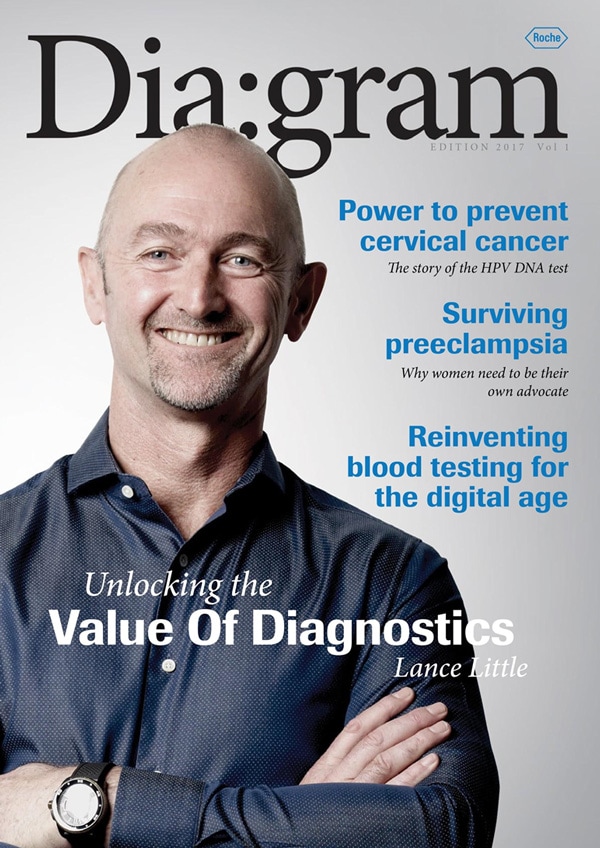The healthcare infrastructure of a nation is a huge determinant of its capability to cope with a pandemic. Having robust testing capabilities allow greater efficiencies in population management. With a population of fewer than 5 million people, New Zealand is, by any measure, a small country. But it has made some giant steps in laboratory diagnostics in recent years. Arguably, this has helped the country cope with the coronavirus pandemic, and recover from it quicker. Diagram uncovers the driving forces of innovation for laboratories in New Zealand.
Three key insights on laboratory innovation

New Zealand’s laboratory industry is an exemplar of innovation. Here, Don Mikkelsen of Counties Manukau Health in Auckland explains why.
1. Strong political will
Don Mikkelsen, Services Manager at Counties Manukau Health laboratories in Auckland, says New Zealand’s government-funded model has fueled the progress. “All of our laboratory components are funded by the government,” he said. This model has helped labs focus more on innovation, and less on test volume – which is why, according to Mikkelsen, over-testing is less a problem in New Zealand than in other countries.
“There is no doubt New Zealand managed a very quick response to COVID-19, and mass testing was a critical factor in our ability to cope with the pandemic. The world now sees the importance of testing and screening the population with fast and accurate diagnosis at scale. We would not have been able to do this in New Zealand without the laboratory infrastructure we already had that allowed us to respond and deploy resources in to our Covid-19 testing effort.”
2. The right mix of technology and talent
Of course, New Zealand labs still face challenges. Technological progress, for example, has been a double-edged sword. “We’re seeing a shift from chemistry toward information technology (IT),” Mikkelsen said. “The challenge is bringing in young people with a technology-based skill base to drive labs forward.”
Mikkelsen saw the power of young talent in action after an equipment update led to mysterious inefficiencies in his own lab. “Short Turn Around Time (STAT) capability was actually hampering the performance of the system,” Mikkelsen said.
With some help, Mikkelsen’s team turned things around in six short months. “We had smart, young people looking at the system and software, being brave, and experimenting,” he said. “Now, about 70% of potassiums are out in 30 minutes. Regardless of the patient, we’ve got that level of performance.”
Having this right mix of technology and talent is even more important today as well. While New Zealand is faring better than other countries, this is no time to be complacent. As the country is thinking of possibly opening up its borders to travel, testing capabilities need to improve. Laboratories in New Zealand are working hard to increase testing capabilities. They are preparing for up to twice the daily peak of testing should a surge occur.
Read more about digital technology in healthcare.
3. A drive toward data integration and automation

Technology has not only improved performance in labs in New Zealand. According to Mikkelsen, it has also made organising and archiving test results far easier. “The lab results of 1.5 million people in Auckland are on one database.”
The next step, he said, is to develop a system that allows labs and clinicians to share patient data in a more efficient way. “It would be immensely helpful to get clinical information as well.”
Mikkelsen also imagines a future where lab results are delivered to patients accompanied by automated analysis – although he knows it might be difficult for some clinicians to accept at first. “A lot of people go into medicine because they like analysing data. We don’t want to affront their knowledge.” But he believes that many doctors will welcome a system that identifies data patterns for them.
With that in mind, Mikkelsen envisions a lab of the future where IT is an even greater focus.
The lab professional who’s looking for data patterns and better system productivity, and attuning the lab to actually assists hospital function, that’s where diagnostics can make the biggest difference.
Read more on Diagram magazine for more healthcare and diagnostics news.
For more related articles: Building A Data Ecosystem For Better Healthcare, Towards A More Human Lab, Moving Diagnostics And Medicine Onto The Technology Curve














